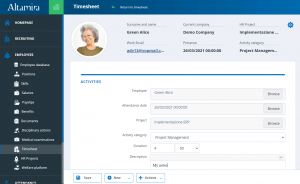One of the most important elements that can powerfully affect the outcome of a recruiting campaign is the application form.
A too-complex application form can drastically reduce the response rate by prospective job candidates, resulting in a large drop in the number of CVs received by the company. This applies especially to the large share of job applications that are filled in via smartphone.
There are many studies that support this conclusion. One of them, conducted by Appcast, showed that job applications that needed more than 15 minutes to complete saw a drastic drop in completion rate, of up to 365%.
A misconception that some companies still fall prey to is that of thinking of the application form itself as a filtering tool, much like a sieve through which to thin out the number of applications from the start.
The argument goes like this: if we build a complex application process that requires answers to dozens of questions, we will only get CVs from people who are really interested in the position.
This strategy, adopted mainly by the big brands that receive thousands of CVs per day, has a number of weaknesses that can lower the final quality of the candidate selection process:
- There are other instruments, first and foremost the job description, that can be used to influence the quality of the applications. The clearer and more detailed the job offer, the more appropriate the applications received will be.
- A too-complex application process effectively shuts out those candidates who don’t have enough free time to spare. Typically, this means those who already have a job, maybe even at one of your competitors, and who could turn out to be very valuable candidates.
- With the features provided by a good ATS, you can always perform a fast first screening that will eliminate the CVs that are a bad fit, regardless of the number of applications received. Thus, trying to restrict the number of applications from the start makes little sense.
So, what is the ideal number of fields for an application form?
At first glance, for companies using recruiting software that is able to read the information from the candidates’ CVs, it might be enough to have a form with just four fields:
- First name
- Last name
- E-mail address
- CV in attachment
In practice, no company is using such a minimalistic form. That is because a too-brief application form can deprive the company of some information that would be useful during the selection process.
Our recommendation—based on our experience configuring our digital recruitment platform for hundreds of different companies—is to limit the number of fields on the form to those which are truly useful, meaning those that are needed for one of the following purposes:
- Identifying the candidate.
- Contacting them.
- Yielding statistics that are useful for that particular selection process.
Thus, if you plan to filter and evaluate candidates primarily on the basis of a particular skill, language, level of experience, etc., you should ask explicitly for that element on the application form.
We also recommend providing a field where a candidate can attach a cover letter—a useful tool to evaluate their communication skills and other soft skills—and, if using an ATS, to add another field where they can attach a photo, so that the candidate will become immediately recognizable on the selection platform.
Copyright: ©relif/Fotolia




























































































